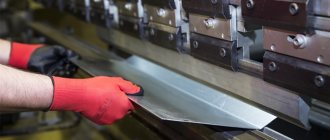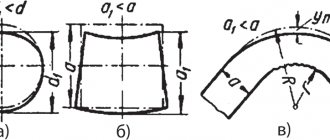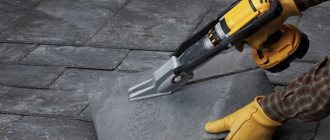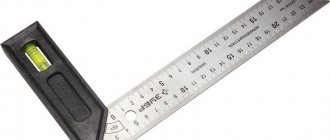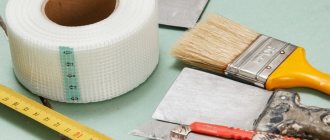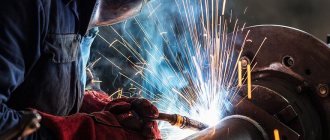Special tools for bending metal allow you to create high-quality parts without damaging the material during processing. When deformed, the workpiece takes the required shape - it can be bent at an angle, with the required radius, in the form of a bracket, loop, square, etc.
Thin parts are bent using the cold method, and for workpieces with a thickness of 4 mm or more, hot bending technology is used. When choosing equipment for this procedure, it is necessary to calculate the volume of products produced and determine the properties of the materials that will be processed. In small workshops, you can use manual machines that are easy to move from place to place. For mass and serial production, more productive tools are recommended, suitable for processing different types of materials.
Machines used in metal bending enterprises:
- Hydraulic - used for processing workpieces made of durable material that cannot be bent with hand tools. This technology ensures high speed and accuracy of work, as well as impeccable quality of finished products.
Image #1: hydraulic machine
- Electromechanical - suitable for processing parts up to 2.5 mm thick and up to 3 m long. Such tools are used to create products of non-standard sizes and for mass production.
Image No. 2: electromechanical machine
Techniques and tools used for bending metal strip parts
When choosing a hand tool for bending metal from a strip, it is necessary to take into account its properties and thickness, as well as the dimensions of the workpiece. In this case, the following recommendations are observed:
- If the thickness of the workpiece is less than 0.2 mm, it is advisable to use wooden or metal pads so that when struck with a hammer there are no marks left on them.
- When the workpiece thickness is from 0.2 to 0.5 mm, light hammers are used.
- To pre-bend metal sheets with a thickness of 3 mm or more, heavy hammers are used, and from 8 mm, sledgehammers are used.
- The weight of the vice is selected based on the forces applied for bending.
- When fixing workpieces in a vice, pads made of mild steel, non-ferrous metal, etc. are used.
To create the contour of the product profile, taking into account radii and angles of inclination, pliers are used. Bending is done along pre-designated lines. The angle of inclination is checked using a template.
Image #3: metal bending pliers
Manual sheet bending machines and mechanically driven devices are also used for processing sheet material. They have equipment for bending various profiles. The operating principle is based on the action of a rotary traverse, which, when moving, bends the workpiece at the required angle.
Image #4: Manual sheet metal bending machine
What tools are most often used for straightening and bending metal and wire?
Often craftsmen have a desire to purchase all the options for tools that are on sale. However, this is unwise. First you need to understand with what volumes of products
you plan to work. For example, if we are talking about a small workshop, then simple hand-held machines and tools will be quite sufficient. Such equipment can easily be taken with you to work on the road at various construction sites.
You also need to understand what types of material you plan to work with. If we are talking not only about thin sheet metal, but also about more massive products, you will need to buy productive machines.
If you need any metal work done, please contact us. The Ural Sheet Structures Plant carries out high-quality bending in Yekaterinburg. We have all the necessary equipment, as well as high-class craftsmen. The cost of bending ranges from ... to ... rubles. We work quickly and guarantee high quality.
Techniques and tools used for bending pipe parts
To bend pipe blanks, manual and mechanized methods are used. To prevent the appearance of folds and flattening of the walls, fillers are used. The permissible bending radii are shown in the table.
Image No. 5: permissible pipe bending radii
Devices used for bending copper tubes of different diameters:
- multi-strand pipe bender;
- manual lever pipe bender - suitable for bending gas steel cold pipes with a diameter of 1/2, 3/4 and 1 inch without filler;
- a special head with a manual drive - used to give the desired shape to cold steel pipes with a diameter of no more than 50 mm at an angle of 180° without filler.
Your own roller
There may be a need to independently manufacture a pipe from a metal sheet. Homemade pipes can be used for different purposes: as a chimney, air duct, samovar pipe, etc. Craftsmen have come up with many ways to bend sheet metal into a pipe. Let's look at some of the simplest options.
Option 1
Without having a special device for bending metal, you can roll a sheet into the shape of a pipe, using for this purpose either some kind of round blank or a ready-made piece of an old pipe. Most people use a pipe.
So, we lay out a sheet of metal on the surface of the earth or concrete floor. Now let's prepare a template onto which we will wind the metal. We weld two small tubes crosswise to both ends of the old pipe (perpendicular to each other). Their diameter must be sufficient to insert a crowbar. This will be our bending device. Next, we place the pipe on the edge of the sheet and begin to wrap the sheet around it. This work will require 3 people: one stands on the pipe, the other two use crowbars to rotate the pipe. Each rotation is performed 90 degrees. The crowbar is rearranged to 0 degrees.
So we gradually twist the entire sheet around the pipe and get several new cylindrical turns. Usually the very edge of the sheet remains straight. To bend it too, you need to use a wooden mallet or a rubber mallet as a metal bending device.
To get a pipe of the required diameter, use a measuring tape to measure the length of its circumference (to do this, multiply the diameter by 3.14) and cut off the required piece with a grinder. After this, we remove it from the workpiece and carry out welding work along the seam of your new pipe. In this way, you can make as many pipes as you like without using a special sheet bender.
Bending strips into a ring
A more complex operation is bending strips into rings.
What is needed here is a small and easy-to-manufacture machine, for example, like the one shown in the video. It consists of a base plate on which three rollers are fixed - two support and one drive, on a handle 30-40 mm long. The drive roller can move along a horizontal axis and press the strip against the support. One of the support rollers must be able to move perpendicular to the direction of pressure. In this way the diameter of the resulting ring is adjusted. The strip is placed between the rollers and pressed using a screw mechanism. When the drive roller rotates, the strip begins to move between it and the support rollers and bend towards the drive. After a complete pass of the strip, an almost perfect ring is obtained. If you make the handle telescopic so that the arm can be made longer, then you can bend strips of almost any thickness onto the ring without much physical effort.
This homemade strip bending machine is practically no different from the factory one. With the right choice of metal for the rollers and clamping device, small-scale production, for example for the manufacture of decorative fences, gates or frames of canopies and awnings, is possible even in a home garage, not to mention a metalworkshop.
Tips and tricks for making rebar benders
When making a bending machine for reinforcement with your own hands, it is important to follow a number of tips and recommendations:
- All structural elements should be selected with a margin of safety. Saving on one of the parts can lead to a number of problems and require significant financial investments to restore the functionality of the reinforcement bender.
- Before starting work, you need to make sure that the parts are assembled correctly and are securely fastened.
- It is recommended to use parts made of alloy or tool steel, as they can withstand significant loads and ensure the maximum possible durability of the machine.
- It is important to decide in advance on the type of design so that it provides the necessary functionality. It is not possible to make alterations in the future in all cases, and manufacturing several machines is not always financially profitable.
Despite the apparent simplicity of the design of the machine, its assembly should be taken seriously. The parts must be adjusted as closely as possible to avoid problems during operation and rejection of the reinforcement.
You can make a reinforcement bender with your own hands without any problems. Its cost, even taking into account the time spent on creation and the purchase of materials, will be tens of times lower than the purchase of a machine made industrially. It will cope with its tasks in the same way, but at the same time, knowing its design, you can easily repair and maintain it, and, if necessary, even improve the design.
Types of bending of metal products
Metal bending is done manually and using automatic devices. In the first case, the process will be quite labor-intensive, requiring the use of pliers and a hammer, as a result of which this procedure will take a lot of time.
It will be much easier and better to mechanize the process with the help of machines and corresponding devices. The cylinder shape is given to the product by special rollers. With their help, chimneys, gutters, and pipe products are created.
The development of machine tool production has made it possible to achieve bending of material for the manufacture of the most complex products. And the quick replacement of the working tool allows you to reconfigure the machine device as efficiently and quickly as possible.
Bending and bending of sheet metal
Bending sheet metal allows you to obtain a product of the desired shape with relatively little effort. Because welding requires more effort, both physical and financial. A sheet of metal can be bent manually or using automation, but the general principles of operation remain the same. It is the features of this process that will be discussed.
- Basic principles
- Types of bending of metal products
- Types of equipment
- Handmade
- Self-production of the machine
Equipment Maintenance and Safety
When working with industrial equipment, you must follow safety precautions:
- Before work, employees are given instructions.
- In mechanized machines, electronic control is used to start the working mechanisms. This reduces the risk of injury while working.
It is important to periodically lubricate the moving elements with machine oil to increase the service life of the sheet bender.
Machines for bending metal are used both in enterprises and in private workshops. When choosing equipment, you need to take into account the size and thickness of the workpieces being processed. The type, size and characteristics of the machine depend on this.
Step-by-step instructions for creating a do-it-yourself reinforcement bender
To design a bending machine, it is necessary to go through a number of stages.
- Selection of drawing.
- Preparatory work.
- Assembly.
Each of them requires a clear understanding of the purposes for which the use of this equipment is required, as well as the competent distribution of allocated funds.
Selection of drawing
There is no point in reinventing the reinforcement bender, since many different drawings can be found in the public domain on the Internet that allow you to create effective, time-tested structures. This will simplify the search for the necessary materials, calculate cost estimates, select tools, and also allow you to estimate the amount of time for production.
An example of a drawing of a reinforcement bender with a bearing.
At the same time, it is worth understanding that you need to create a tool only for specific purposes, and not make it universal and, as a result, never use this functionality. If subsequently there is a need to expand functions, then it is better to use it later, having laid down a sufficient margin of safety for this.
Preparatory work
At the preparation stage, you need to decide on the following points:
- Decide for what purposes the reinforcement bender will be used.
- Select a drawing of the desired design. Make changes if necessary.
- Purchase materials.
- Select tools for assembly.
If the budget is limited, then in this case it is possible to create a lever design of the machine at the initial stages, and subsequently equip it with a hydraulic drive. It is important to create a machine base in which the safety margin will exceed the same parameter for the fittings by 3-5 times. Such data can be found from tables in reference books, so there should be no problems with this point.
Selection of tools
To create a reinforcement bender you must have the following tools:
- an angle grinder (builders call it a “grinder”) with a set of cutting and grinding discs for metal;
- electric drill with a set of metal drills;
- semiautomatic welding machine with a set of suitable electrodes;
- hammer, pliers, file, core;
- vice.
The use of power and hand tools is required to ensure high machining productivity as well as accurate part fitting.
Necessary materials
To create bending machines you will need:
- Steel corner with a side width of 75 mm, a length of 800 mm, a metal thickness of 5 mm.
- Steel rod with a diameter of 12 to 25 mm.
- Bolts with a diameter of 20 mm and a length of 50 mm, as well as washers for them.
- Additional devices, for example, a hydraulic drive, if its installation is provided for by the design.
It is important to create a massive structure that will ensure the stability of the machine when bending and applying force.
2 options for manufacturing a machine for bending reinforcement
The following designs of homemade reinforcement benders are considered the most popular:
- From the corner.
- From a bearing.
Corner machine
The procedure for making a device for bending reinforcement from a corner:
- The corners are cut to size as indicated in the drawing.
- The steel U-shaped profile is cut so that its length is 1 m. It will serve as a bed.
- A pin made of thick reinforcement is welded to the frame in the middle.
- We cut off a piece of pipe whose diameter allows it to be placed on the welded pin.
- A corner is welded perpendicular to the welded pin. Then a hole is drilled in it for the internal diameter of the pipe.
- The corner with the pipe is put on the pin. Then mark the place for welding the corner piece, remove the moving part and weld the second part of the corner.
- A piece of reinforcement is welded to the end of the movable structure. It will act as a lever. You need to attach a comfortable handle to the end opposite to the mount.
- Reinforcing legs are welded to the frame.
It is recommended to lubricate the bending axis to extend its service life by reducing friction of parts during operation.
There is a simpler design for a reinforcement bender made from a corner. You need 2 corners of 80 cm each, with a metal thickness of at least 5 mm. You will need studs, 3 pieces of 10-15 cm, and one 20 cm.
The procedure is as follows:
- We weld two pins to one of the corners, with the help of which we will attach the corner to the table.
- We weld a piece of tube on the edge to the second corner. This will be our moving part.
- We weld a pin to the other end of the corner. We put a piece of pipe on it and screw two nuts. This will be our handle.
The simplest, homemade machine for bending reinforcement from a corner.
Simplicity of design and mobility allow it to be transported from one construction site to another and attached to any table; the machine will be an excellent assistant in reinforcing strip foundations, floors and other reinforced concrete structures. This reinforcement bender allows you to bend reinforcement with a diameter of up to 14 mm.
Device for bending reinforcement with a bearing
The production of a machine from a bearing for bending reinforcement is implemented as follows:
- From a square pipe 40x40 mm it is necessary to cut a piece 300-350 mm long. Drill holes in it with a diameter of 12 mm for installing bolts for fastening.
- On one side you need to insert the nuts and weld them to the profile, and then make a cut to install the bushing for the bearings and weld it. It is important that the bushing is of the correct shape without defects or dents.
- In a piece of 40x40 mm profile, you need to make cuts to attach the bushing to the shock-absorbing rod. A lever made from a half-inch diameter pipe needs to be welded to it.
- From a 32x23 mm corner you need to cut a piece 250 mm long, and then weld it to the profile with a small allowance of 15 mm for structural reliability. Then you need to insert a support made of a steel strip.
- To create a movable limiter, a steel plate and a pin are used.
- The lever is welded to the base of the structure. After this, the bearings are inserted into place and the machine is assembled.
Before operation, you need to check the functionality of the structure on steel rods with a diameter of up to 10 mm. Only after this can maximum loads be applied.
Types of equipment
For the modern metal bending process, there are many options for the latest devices. In production, presses are usually used , which can be divided into the following types:
- Rotary, bending metal by moving between special rollers. Suitable for the production of large-sized products in small batches.
- Rotary presses bend the plates using bending beams and two plates. The stationary plate is located at the bottom, and at the top there is a rotating plate. The optimal option for processing sheet metal products with a simple relief and small dimensions.
- Standard pneumatic or hydraulic presses are used for mass or small-scale products made of stainless steel or other metal. Bending is done between the punch and the die. Due to this, even thicker products can be processed. It should be noted that hydraulic presses are used more often than pneumatic ones due to their simpler operation and cost.
Of all the types of equipment described above, the most modern is rotary. It operates automatically, and the worker does not need to calculate the optimal force value in advance.
Rotary presses are also considered automated. Here one sheet is sent to the device, which must be positioned as required by the task. Most often used in small enterprises where they work with metal parts.
Bending strips on edge
It is more difficult to make a machine for edge bending. When making metal decor, such an operation is required quite often. The principle of operation of such a device is similar to that described above, but bending a steel strip on an edge requires much greater effort, so the pressure roller does not rotate, but moves back and forth on the lever. In addition, a clamping device must be installed on the strip feed line to keep the strip in position. This device can be a regular clamping block with bolts or studs with a slot through which the strip will pass.
If bending is often done on strips of different widths, then you need to make several blocks with slots corresponding to the gauge that is being processed. But a homemade tool, for all its attractiveness and cheapness, is still inferior to an industrial one, the functionality of which is much higher.
Hand tools are produced in the form of universal devices, in which only the attachments and levers are changed, or in the form of entire sets, where each mechanism performs only one, maximum two functions.
An example of such a kit is “Cold forging” of industrial production.
Tools for bending industrially made metal strips have the advantage over home-made ones that they are made of special grades of steel and will not deform when bending workpieces of sufficiently large thickness. They are easily adjusted to the required dimensions and do not require the manufacture of new mandrels and dies each time the diameter or bend angle needs to be changed.
Moreover, their cost is not too high even for a home craftsman. Finding the necessary parts for a homemade machine, assembling, fitting and tuning will not cost much less, even with proper metalworking qualifications. If you do not buy the cheapest tools, then bending machines will work for decades.

